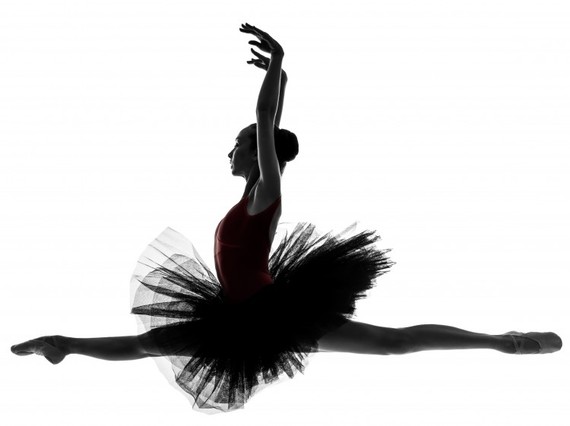A tear of the anterior cruciate ligament (ACL) is often associated with a popping sound, a giving way and the nauseating feeling that something really bad just happened to one's knee. [1]
When it happens to a ballet dancer -- often in a performance when landing from a leap, or twisting in an unplanned way -- those dreaded feelings are amplified by career-ending fear. Will the knee ever be the same again? Can it be fixed so that I can dance? Who has ever come back from this injury? Why did it happen to me? The sound of the pop can be so loud that it is heard by fellow dancers, or theatergoers in the front row. But the scene of the agonized dancer being carried off stage was not in the choreography; not even dreamed of.
Fortunately, those of us who care for such injured performers bring not only our skills, but our philosophies of rehab and recovery to these artists -- who may be dancers, but are athletes as well. Dance has evolved from the Balanchine days of whisper-thin ballerinas to the raw and beautiful athleticism that so many choreographers demand today. Out are cigarettes, anorexia and the aversion to muscle bulk that characterized that bygone era.
Today's dancers have adopted the training and nutrition techniques of Olympian champions. They have built graceful, powerful bodies required to leap ever higher, and dance more demanding routines. But along with these adaptations have come the injuries of overuse, the ligament ruptures of soaring feats of awe, and the cartilage injuries of repetitive impact. [2]
While routine aggressive care of such frequent soft tissue injuries is commonplace, the care of ACL injuries remains controversial [3]. Our success in returning dancers to ballet is based on several approaches and, admittedly, biases.
First, immediate care of the injured dancer makes an enormous difference. [4] Minimizing the mourning of the injury and the anxiety of the future by solving the problem and initiating rapid return to the studio reduces the likelihood of the injury becoming a career-ending event.
Dancers cannot afford to lose a portion of their patella tendon or their hamstrings. So, when the ACL is completely ruptured, we reconstruct it with a donor bone-patellar tendon-bone graft, pre-loaded with the patient's own stem cells. During surgery the graft is placed so as to permit the knee to extend equally to the opposite knee -- which, for many dancers, actually means hyperextension. Traditional graft placements often did not allow this extra motion. [5] Without it, though, the dancer would never be the same.
Local, long acting anesthetics allow the dancer to watch their knee extending fully in the recovery room (see video). This visualization makes the recovery process significantly better since, once normal pain from post-surgery kicks in it, is harder to achieve the full range of motion. The video provides a mental affirmation; just knowing that the knee can go there makes all the difference.
Reduction of swelling with cold compression alternates with soft tissue massage. Day One post-operative physical therapy is followed by daily PT visits. As soon as the dancer is comfortable exercising at the bar, standing on the non-injured leg and working the injured leg, a return to class and the theater is possible. Full return to dance is judged by strength and agility tests in our clinic. Once the dancer can lift and land with confidence, protecting the leg, their on-stage career can resume.
The more we ask our artists to perform as athletes, the more we must treat them as both. Few populations have a better mind/body awareness than ballet dancers. It's a thrill to help restore that integration -- not only for their benefit, but for ours as an audience as well.
References:
1. Am Jung, K., Lee, S. C., Hwang, S. H., & Song, M. B. (2009). ACL injury while jumping rope in a patient with an unintended increase in the tibial slope after an opening wedge high tibial osteotomy. Archives of orthopaedic and trauma surgery, 129(8), 1077-1080.
2. Hreljac, A. (2004). Impact and overuse injuries in runners. Medicine and Science in Sports and Exercise, 36(5), 845-849.
3. NOYES, F. R., & MCGINNISS, G. H. (1985). Controversy about treatment of the knee with anterior cruciate laxity. Clinical orthopaedics and related research, 198, 61-76.
4. Demirag, B., Aydemir, F., Danis, M., & Ermutlu, C. (2011). Incidence of meniscal and osteochondral lesions in patients undergoing delayed anterior cruciate ligament reconstruction. Acta orthopaedica et traumatologica turcica, 45(5), 348-352.
5. Howell, M. S. M., & CLARK, J. A. (1992). Tibial tunnel placement in anterior cruciate ligament reconstructions and graft impingement. Clinical orthopaedics and related research, 283, 187-195.
